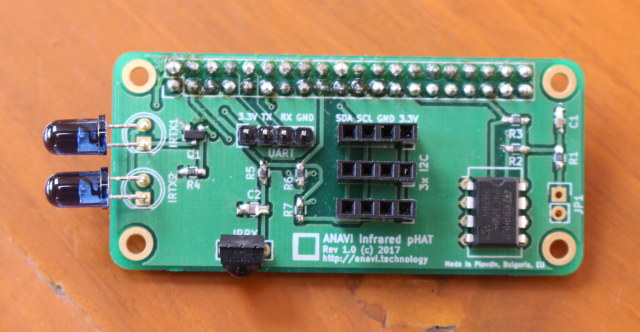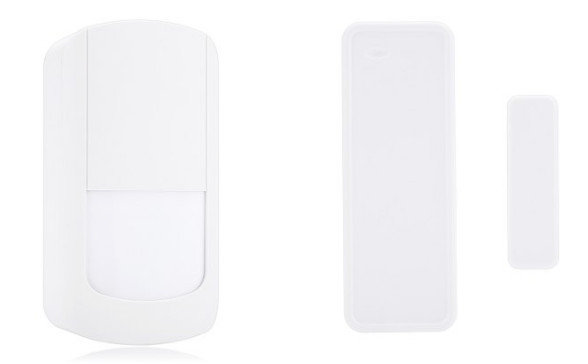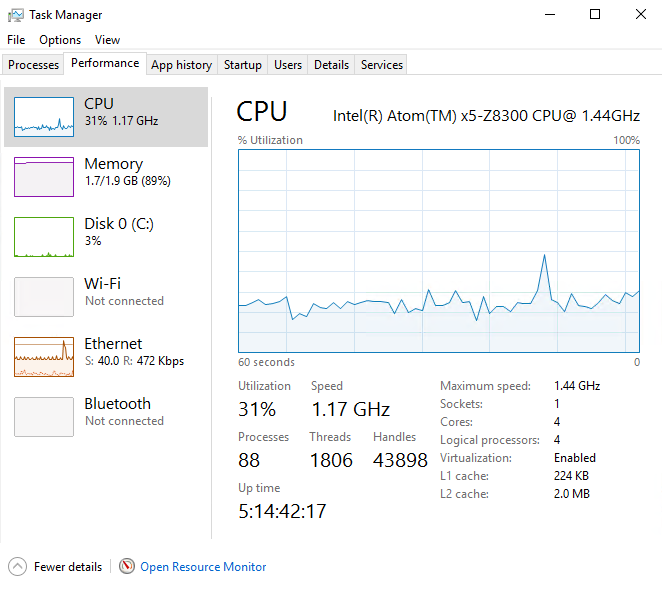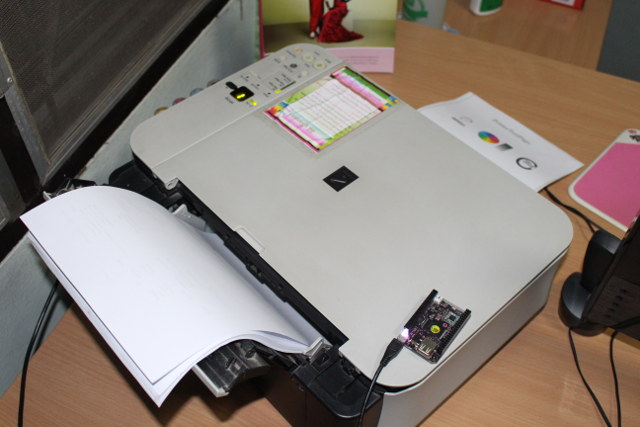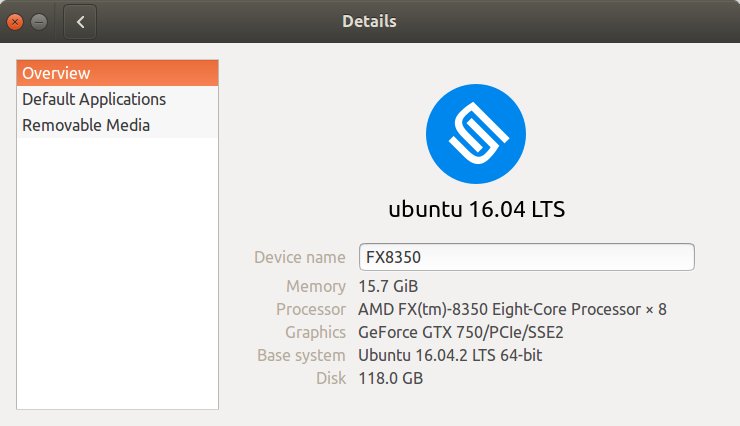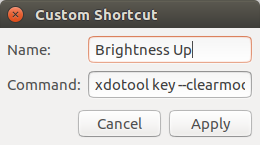Leon ANAVI may be a full-time software engineer, but in his spare time he has started to develop open source hardware project with the help of others and by himself. Last year, I got hold of his RabbitMax Flex HAT for Raspberry Pi, and tested it with the provided LCD display, one temperature sensor, and a Raspberry Pi 2 board. The board also featured IR receiver & transmitter, and I tried to use it with my aircon remote control, but at the time I did not find a way to do it easily, and control my TV with LIRC instead. Leon has now made a simpler, smaller, and cheaper add-on board for Raspberry Pi Zero, and other Raspberry Pi boards with a 40-pin header, with 3x I2C headers, two IR transmitters, and one IR receiver. He sent me a sample of “ANAVI Infrared pHAT”, and after quickly describing the board, […]
Karl’s Home Automation Project – Part 2: 433 MHz / WiFi MQTT Bridge, Door & PIR Motion Sensors
Karl here again for part 2 of my home automation project. We will be looking at how to automate your lights based on time of day and motion. In the first part we setup Home Assistant and uploaded firmware to basic Sonoff Wifi switches. Today we will setup a 433 MHz to MQTT bridge and some sensors. 433 MHz Depending on your country 433 MHz is an open frequency to use to communicate with. There are hundreds of different types of devices that use 433 MHz to communicate information. We will be focusing on 2 today from Gearbest: WMS07 motion sensor (left) and WDS07 door/window sensor (2 parts, right). I am not taking the door/window sensor apart, since it is super basic, but I’ve included some photos of the PIR motion detector. 433 MHz Bridge While contemplating how to get presence on a per room basis I ran across this […]
Karl’s Home Automation Project – Part 1: Home Assistant & YAML, MQTT, Sonoff, and Xmas Lights
Karl here. I am here to write about my home automation project. First thing I want to say is that I am very cost conscious and I don’t mind putting in extra effort into the setup of things to keep costs down. I did invest a lot of time and had to do a lot of reading to get my project going. It took while and I received a lot of groans from my wife while testing. I am still in the process of tweaking things. I started watching a series of videos on YouTube from Bruh Automation. He introduced me to Home Assistant. It got me really excited. He uses a Raspberry Pi as a server but I already had a Wintel Pro CX-W8 Smart TV Box which I use as a server. I run 3 Minecraft Servers, Emby Server, iSpyConnect DVR (2 IP Cameras), Unifi wifi controller, and […]
How to Use CHIP Board as a Linux Printer & Scanner Server
We have a Canon Pixma MP250 series multi-function USB printer connected to a Windows 10 laptop at home, and for several years, I had no problems printing from my Ubuntu computer to that printer. However, this setup recently stopped to work, and whatever I would do, printing would never start from my Ubuntu PC, even though the file was (allegedly) successfully transfered to the Windows 10 laptop connected to the printer. So I decided to setup my own printer server, as well as a scanner server since it’s a multi-function printer, using one of the boards from my collection. As I opened my cabinet, I wondered whether I would use an Orange Pi board, Raspberry Pi board, or Nano Pi board, but I needed WiFi since there’s no Ethernet in the office where the printer is located, and I found that Next Thing CHIP board was the ideal candidate as […]
CHUWI LapBook 14.1 Windows 10 Firmware, Drivers, and BIOS
In case you’ve installed another operating system like Ubuntu on CHUWI Lapbook 14.1 laptop, and want to re-install Windows 10, CHUWI has released Windows 10 firmware, drivers, and LapBook 14.1 “BIOS” in their forums. So I’ve re-installed Windows 10 on the laptop using the Windows 10 image. You’ll need to download the 8 files CHUWI LapBook 14.1 Windows.part1.rar to CHUWI LapBook 14.1 Windows.part8.rar, and after extracting them you should get a “CHUWI LapBook 14.1 Windows” directory with all necessary files to reinstall Windows. The files take 8GB, so it may not fit on all 8GB flash drives, and you may need to use a 16GB or greater drive. I just copied the files to an 64GB flash drive formatted with NTFS, insert the drive into the USB 2.0 port of the laptop, and I could start the installation process at boot time. However, it quickly failed as it tried to […]
How to Upgrade to Linux 4.8 in Ubuntu 16.04.2
I had read from several news sources that Ubuntu 16.04.2 would come with Linux 4.8. My system was upgraded from Ubuntu 16.04.1 to Ubuntu 16.04.2 this week-end, but I still had Linux 4.4.
|
1 2 3 4 5 6 7 |
cat /etc/lsb-release DISTRIB_ID=Ubuntu DISTRIB_RELEASE=16.04 DISTRIB_CODENAME=xenial DISTRIB_DESCRIPTION="Ubuntu 16.04.2 LTS" uname -a Linux FX8350 4.4.0-62-generic #83-Ubuntu SMP Wed Jan 18 14:10:15 UTC 2017 x86_64 x86_64 x86_64 GNU/Linux |
So I wondered why that was, and eventually found my answer on Reddit thanks to EndofLineLF user: If it isn’t a new 16.04.2 installation then you won’t have newer kernel. If your install started as 16.04 or 16.04.1 then with all updates installed “lsb_release” will display 16.04.2 as version because that’s what you have. The switch to HWE (Hardware Enablement Stack) was never automatic. So if you want newer kernel you have to install it manually. https://wiki.ubuntu.com/Kernel/RollingLTSEnablementStack#Packages-1 sudo apt-get install –install-recommends xserver-xorg-hwe-16.04 This will also install the new HWE kernel because it is recommended for that package. Upgrading to the new kernel is completely optional, and Linux 4.4 will still get security updates, but I did […]
Review & Quick Start Guide for Khadas Vim Pro Development Board with Ubuntu 16.04
Khadas Vim is the only Amlogic S905X development board I’m aware of. There are 4 or 5 versions of the board, but currently only two models are sold: Khadas Vim with 8GB flash and single band WiFi + BLE 4.0, and Khadas VIM Pro with 16GB flash, and dual band WiFi + BLE 4.2. SZWesion, the company behind the board, has sent Khadas Vim Pro for evaluation. Today, I’ll take a few pictures of the board and its accessories, and report my experience playing with Ubuntu 16.04.2 on the board. They’ve also released Android, LibreELEC, and dual boot Android/Ubuntu (for Vim Pro only) images, which you can find in the firmware resources page. Khadas Vim Pro Unboxing and Photos My parcel included Khadas package that looks like a book, an HDMI cable, and the same IR remote control sent with GeekBox, the first board made by the company, and powered […]
How to Assign Brightness Keys in Ubuntu 16.04 and Greater
Yesterday, I installed Ubuntu 17.04 in CHUWI LapBook 14.1, and was surprised everything appeared to work properly. However, the laptop does not come with brightness up and down keys. So I looked for ways to assign other keys to adjust brightness on the laptop, and eventually found a solution on AskUbuntu, and tried the options for Ubuntu 16.04. First we need to install xdotool, a utility that simulate keyboard input and mouse activity:
|
1 |
sudo apt install xdotool |
Once it’s done, go to the Dash, start Keyboard settings app, select Shortcuts tab, and click on the + icon on the bottom of the window to bring up the “Custom Shortcut” window. Now fill the Name field with “Brightness Up”, and the Command field with:
|
1 |
xdotool key --clearmodifiers XF86MonBrightnessUp |
Repeat the procedure with for the down key filling the Name field with “Brightness Down”, and the Command:
|
1 |
xdotool key --clearmodifiers XF86MonBrightnessDown |
Now we should have our two brightness keys, and we […]


